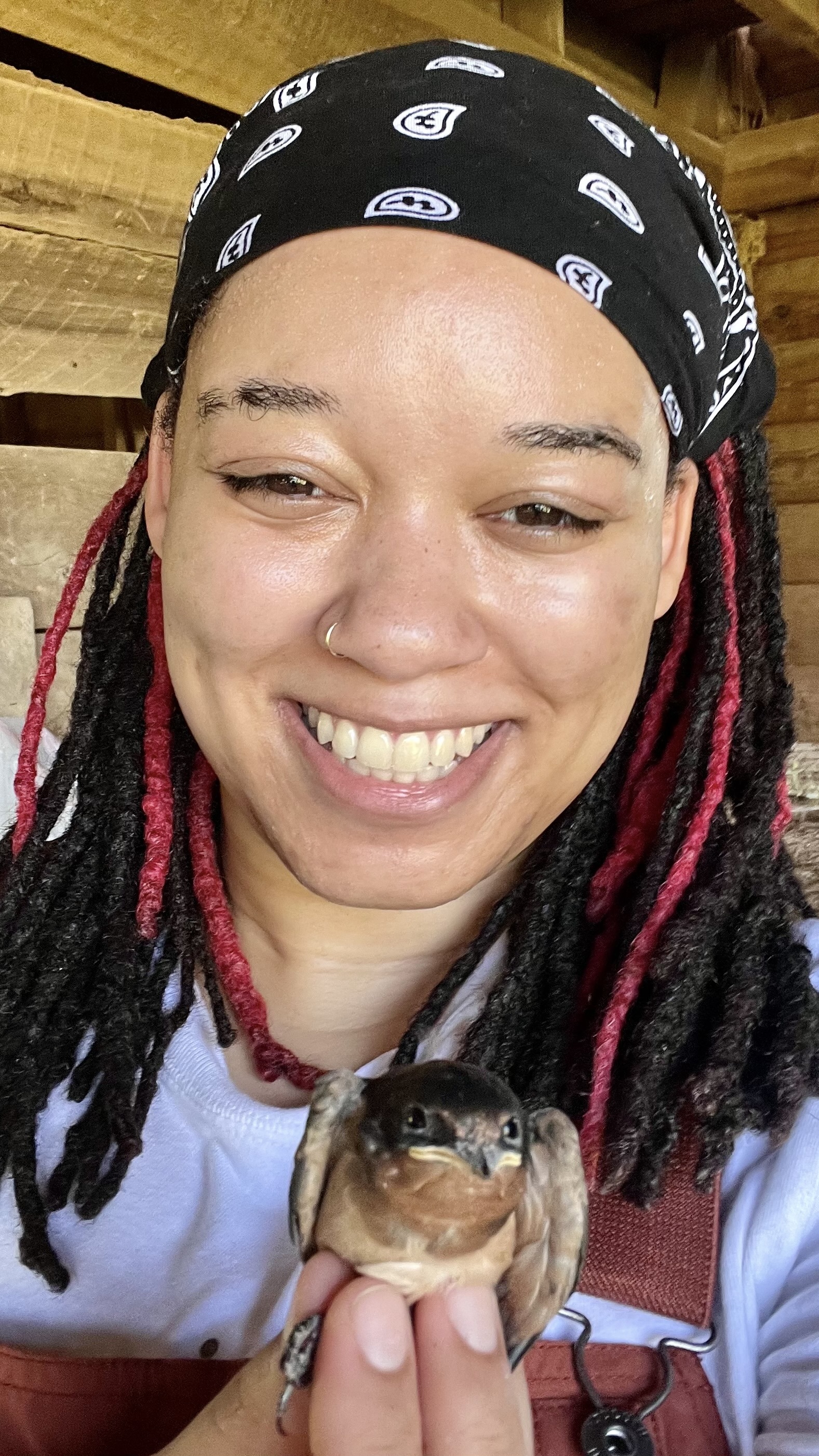Murry Burgess On Inclusive Field Safety
Murry Burgess shares her experience managing social field safety and how what she learned has helped her support marginalized scientists.
This article is from our limited-run newsletter series, Sincerely Science. Read more from the series, or sign up to receive all 6 editions of this series in your inbox.

Inside a barn in rural North Carolina, Murry Burgess picks up barn swallow chicks and measures their bodies after they’ve hatched. It’s probably the most adorable part of her research. “To me, anyway,” Burgess says. “Some people think they look like little bug creatures.”
At the time of this interview, Burgess was a PhD candidate at North Carolina State University, and defended her dissertation in the spring of 2023. Her research is about how a particular species of bird—the barn swallow—grows when exposed to light pollution. Burgess grew up exploring the local wildlife living in human neighborhoods, so researching those impacts felt natural. “I’m familiar with suburban wildlife, a lot of birds, lizards, and frogs. That background is a lot of what inspired me to lean in towards urban ecology and addressing issues like light pollution,” she says.
Welcoming baby birds into the world and monitoring them as they fledge from the nest can be a very gentle, solitary process. Even so, Burgess has developed a passion for safety, specifically in social contexts. At work, Burgess interacts with the area’s birds, snakes, rats, and wasps. But the locals that require the most precaution turned out to be humans.

At Burgess’s rural field site, she sensed early on that she wasn’t welcome in the space. In an article she wrote for Walter Magazine, she described feeling “ignored, distrusted … as if I barely existed.”
“As a Black woman, I’m used to the constant, subtle racism of being … critiqued on my speech and appearance, or held to different standards than my white colleagues,” wrote Burgess. After some other troubling encounters with the field site’s human neighbors, she made the decision to commute to the barn rather than live in the area.
When Burgess spoke about how she was uncomfortable at the thought of the police being called on her while she was working at her site, she realized she wasn’t alone with that concern. “This is not just a me issue,” Burgess says. “Talking to friends and other colleagues, everybody has a story like that.”
Now, Burgess is thinking about how to get more people to enjoy the outdoors safely, with the freedom to do science without unwelcome distractions or discrimination. While working on her PhD, Burgess co-founded the organization Field Inclusive (FI) with her classmate Lauren D. Pharr to support marginalized and historically excluded individuals who work outdoors. A big part of FI’s mission is to address social field safety, an often overlooked aspect of safety that determines how marginalized individuals can do their jobs in communities where they might be othered.
Social safety measures are imperative to helping researchers perform their work not only enjoyably but also accurately, especially in field environments where things are a little less predictable. Social forms of safety have also been shown to improve both performance and physical safety in environments with more day-to-day risk.
A few social safety features Burgess appreciates are requesting identifying gear for scientists working outdoors, alerting property owners of her work in the area, and bringing friends (or her dog, Loki) along while she does science. “When something feels wrong, [I learned] to trust that instinct and figure out a way to solve the issue,” Burgess says. “And just speaking for myself, I feel confident to continue to speak about it. And as [social field safety] grows…more students won’t have to bring up these issues.”

While Burgess likes to help gather safety resources, she does it because she loves the simple pleasures of the field. She says that working outdoors creates a connection to the place, and noticing little changes makes her happy to feel that connection with nature.
Through barn swallow research, Burgess also built a sense of independence and considers meeting the challenges of the field season to be her biggest accomplishment.
“Being able to move the ladder all around, figure out little issues, and catch a rat snake and stop it from eating my chicks…I’ve been very proud of how much problem-solving I’ve been able to do,” she says.
Of course, none of this can-do attitude would be possible without having a support system. Friends, family, therapy, and video games all helped Burgess heal through the hard moments of pursuing a PhD and being a leader of FI. “I just have to thank friends for being willing to listen to me rant,” she says. “Family and friends who understand and are there to listen. That’s been way more valuable than I could have ever imagined.”
Although Burgess will miss her time in the barn, sharing the beauty of the outdoors with anyone interested is integral to her future goals.
“What’s special about [fieldwork] is the connection to nature,” Burgess says. “You learn things in class and through other papers, but I really think nothing beats the experience of being able to get out there and do it yourself.”
Emma Lee Gometz is Science Friday’s Digital Producer of Engagement. She’s a writer and illustrator who loves drawing primates and tending to her coping mechanisms like G-d to the garden of Eden.